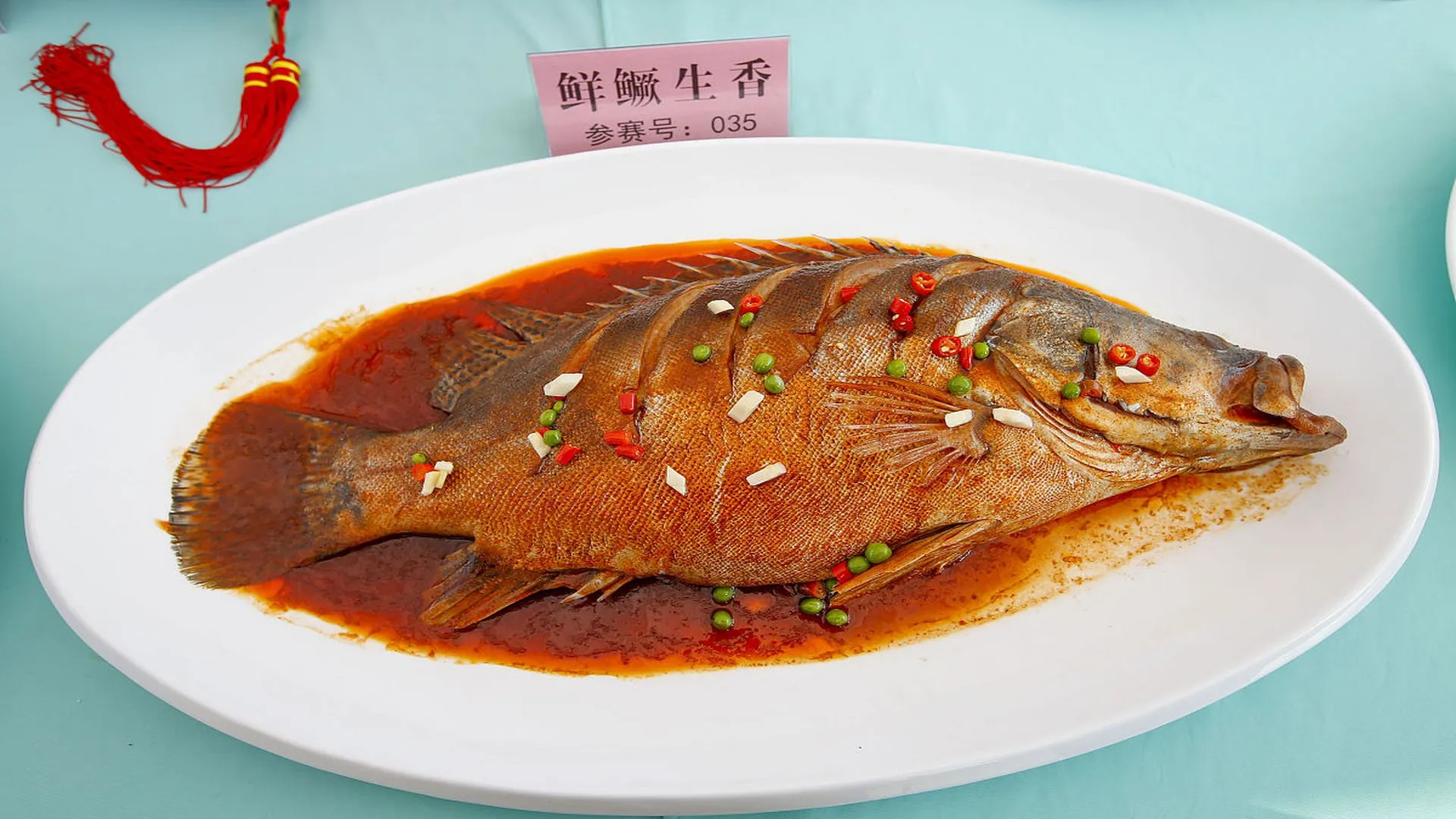The Culinary Legacy of Huangshan’s Fang La Fish: A Delectable Fusion of History and Flavor
Introduction:
As a culinary professional, I am always fascinated by dishes that not only tantalize the taste buds but also carry with them a rich tapestry of history and culture. One such dish that embodies this perfect blend is the Fang La Fish, a traditional delicacy from Huangshan City in Anhui Province, China. This dish is not just a meal; it’s a testament to the region’s culinary heritage and a nod to the historical figure, Fang La, whose legacy is honored through this exquisite preparation.
Origin and Cultural Background:
The Fang La Fish is deeply rooted in the history of Huangshan, named in honor of Fang La, a rebel leader who led a peasant uprising against the corrupt Song Dynasty. This dish, a symbol of resistance and resilience, has been passed down through generations, each chef adding their own touch to the recipe while keeping the essence intact.
Ingredients and Preparation:
At the heart of this dish is the prized mandarin fish, known for its firm, white flesh and delicate flavor. The process begins with selecting the freshest mandarin fish, which is then meticulously cleaned and prepared. The fish is marinated with a blend of traditional Chinese seasonings, including ginger, garlic, and a touch of Shaoxing wine to enhance the flavor profile.
The fish is then coated in a light batter, a crucial step that ensures the exterior turns golden and crispy while the inside remains tender and juicy. The fish is deep-fried to perfection, achieving a texture that is both crunchy and succulent. The pièce de résistance, however, is the糖醋浇汁 (sweet and sour sauce), a tangy and sweet concoction that is drizzled over the fried fish, infusing it with a symphony of flavors that dance on the palate.
Appearance and Texture:
The Fang La Fish is a visual masterpiece, with the fried mandarin fish resting elegantly on a plate, its golden crust glistening under the light. The sweet and sour sauce cascades over the fish, creating a vibrant contrast of colors and a tantalizing aroma that wafts through the air. The dish is garnished with a sprinkle of finely chopped green onions and a drizzle of sesame oil, adding a final touch of elegance and authenticity.
Representative Dishes and Culinary Features:
While the Fang La Fish stands as a dish on its own, it also finds its place in various regional banquets and family gatherings. Its versatility allows it to be paired with a range of side dishes, from steamed rice to stir-fried vegetables, making it a staple in Anhui cuisine. The dish’s key features are its crispy exterior, the balance of sweet and sour flavors, and the tenderness of the fish, which together create a memorable dining experience.
非遗技艺 (Intangible Cultural Heritage):
The Fang La Fish is not just a culinary delight; it is also recognized as an intangible cultural heritage. The traditional method of preparation, passed down through generations, is a testament to the region’s rich culinary history. The dish’s preparation is a craft that requires skill, patience, and an understanding of the flavors that define Anhui cuisine.
Conclusion:
As a food professional, I am in awe of the Fang La Fish’s ability to combine history, tradition, and exquisite taste. It is more than just a meal; it is a journey through time, a celebration of a people’s spirit, and a culinary masterpiece that continues to be cherished and enjoyed in Huangshan and beyond. Whether you are a connoisseur of Chinese cuisine or a lover of historical narratives, the Fang La Fish is a dish that truly deserves a place at your table.
